By the Public and for the Public: Contemporary Collecting at the National Library
Singapore’s National Library is hard at work collecting new forms of documentary materials today for the sake of future generations.
By Janice Loo and Lee Meiyu
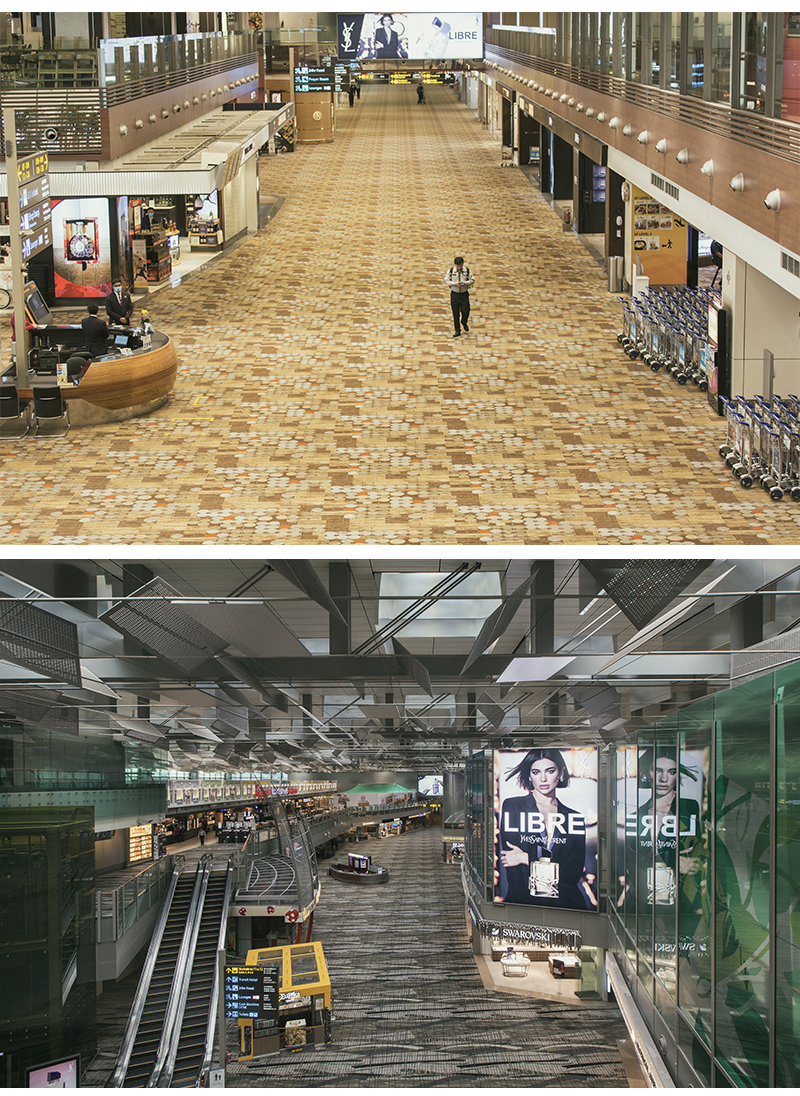
To put together an account of the past, historians typically go through things like manuscripts, letters, diaries, memoirs, documents and photographs. These primary sources provide the raw material from which historians reconstruct the past, which is why these items are carefully preserved by libraries, archives and museums all over the world.
However, these days, people document their lives using new media. While vivid and immediate, new media is also digital and ephemeral, which means libraries and archives need to find new ways to collect and preserve content and information.
The National Library, Singapore (NL) aims to address this through an initiative called Contemporary Collecting. This initiative looks at the acquisition and preservation of materials that represent not only our distant past, but also our recent history. These materials can be collected and contributed by individuals, organisations and institutions to capture the essence of life in the 21st century as we know it.
As part of this initiative, on 1 October 2023, NL launched a new online platform, “Singapore Memories: Documenting Our Stories Together”, where the public can contribute videos, audio clips, photographs and even social media accounts of present-day Singapore for posterity. It uses crowdsourcing – harnessing the collective efforts of the public – to quickly gather and build up a diverse record of the present.
“Documenting Covid-19 in Singapore”
The value of contemporary collecting can be readily appreciated through the National Library’s Covid-19 collection, comprising crowdsourced materials about the pandemic in Singapore.
Singapore saw its first case of Covid-19 on 23 January 2020, marking the start of stringent measures to contain the spread of the disease. Between 7 April and 1 June, the government imposed a “circuit breaker” period to pre-empt further transmissions. Schools, offices and most retail outlets were closed, and social gatherings prohibited.
To record and document the impact of Covid-19 on everyday life, NL partnered with the National Museum of Singapore on a project called “Documenting Covid-19 in Singapore” from 22 May 2020 to 30 June 2021. This was a collection drive for the public to contribute photographs, personal stories, videos, ephemera, web material and objects on their experiences during the pandemic.
More than 5,700 items were received, mainly digital photographs accompanied by brief descriptions or personal anecdotes, from some 470 individuals and organisations. It was timely to launch the collection drive during the partial lockdown as it enabled people to record and contribute scenes that were unique to that moment. There were many photographs depicting changes that people observed around them, such as shuttered retail shops and restaurants, deserted streets, and empty buses and trains, as well as the appearance of safe-distancing markers to guide people to keep at least one metre from each other to reduce the risk of virus transmission.

There were also shared snapshots of daily life reflecting how people adapted to the restrictions, how they found creative ways to spend time at home, and how they kept in touch with family and friends. Notably, the submissions also covered how the pandemic affected festive celebrations and important events such as weddings and births.
Yvonne Cheng and her husband welcomed their first child during the circuit breaker in May 2020. Cheng wote: “In doing our part to stay safe and stay home, even my husband’s mother (a first-time grandma) couldn’t visit and cuddle with him. The postpartum period has always been a time when family and emotional support are important, yet we can only connect virtually and be there for one another in a very different way than we have imagined.”

Through these photographs, Muhammad Farhan Osman provided an intimate glimpse of how his family celebrated Hari Raya Puasa on 24 May 2020 during the circuit breaker. Due to the ban on gatherings with family or friends who do not live together, Muslims took to video conferencing apps such as Zoom to connect and celebrate virtually with loved ones. The communal prayer calls (takbir) and a live sermon were also broadcasted over radio and online channels such as YouTube and the Facebook pages of the Islamic Religious Council of Singapore (Muis) and local mosques.
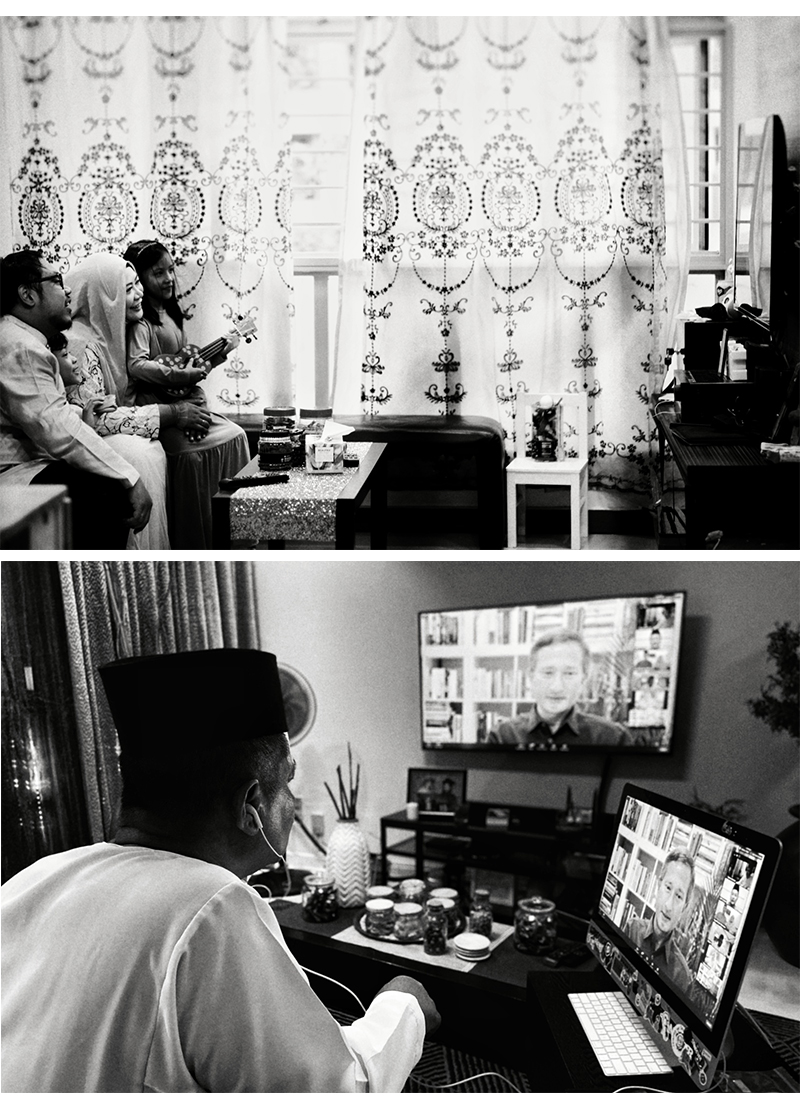
The collection also features stories and photographs of those working on the frontlines to keep Singapore safe, as well as individuals whose acts of charity and kindness made a difference in the community.
Dr Shyamala Thilagaratnam – who is also an avid photographer – and her team at the Health Promotion Board organised and implemented swab operations at migrant worker dormitories. The photos that she contributed formed part of a photo essay titled “Covid Chronicles”. Oliver Guo and Amanda Chua are active volunteers who gathered their family and friends to sew transparent face masks using fabric donated by CYC Tailors. Unlike opaque masks, these clear ones facilitate better communication as they allow lip-reading by those who may be deaf or hard-of-hearing.
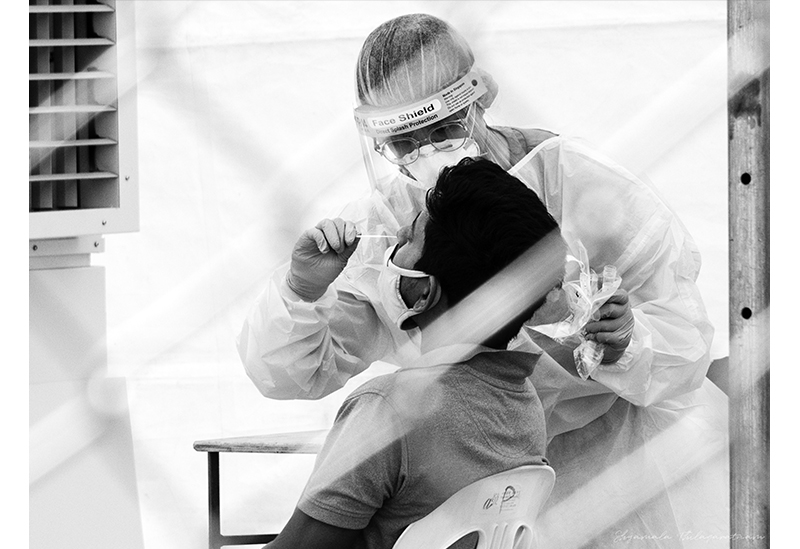

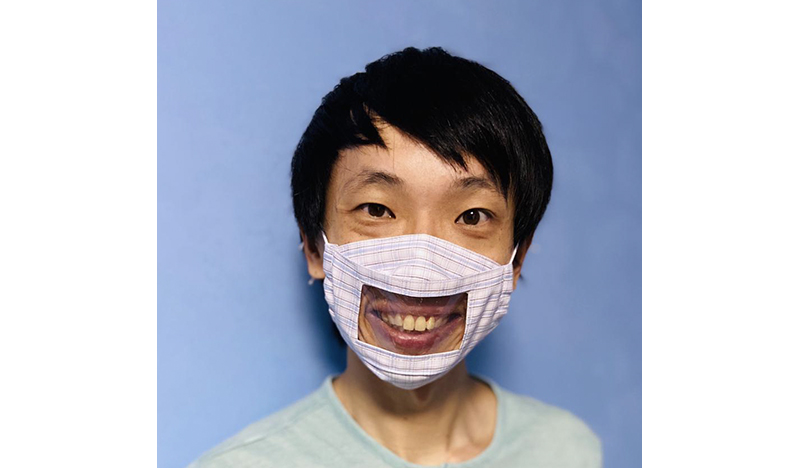
A highlight of the collection drive included a substantial contribution from artist and independent curator Berny Tan. She shared some 640 photographs taken of safe-distancing markers around Singapore between March and August 2020. These represent the earliest, most conspicuous and widespread change in the landscape as coloured sticky strips were stuck to floors, and hazard tape draped over structures and furniture to demarcate where people should queue or sit.
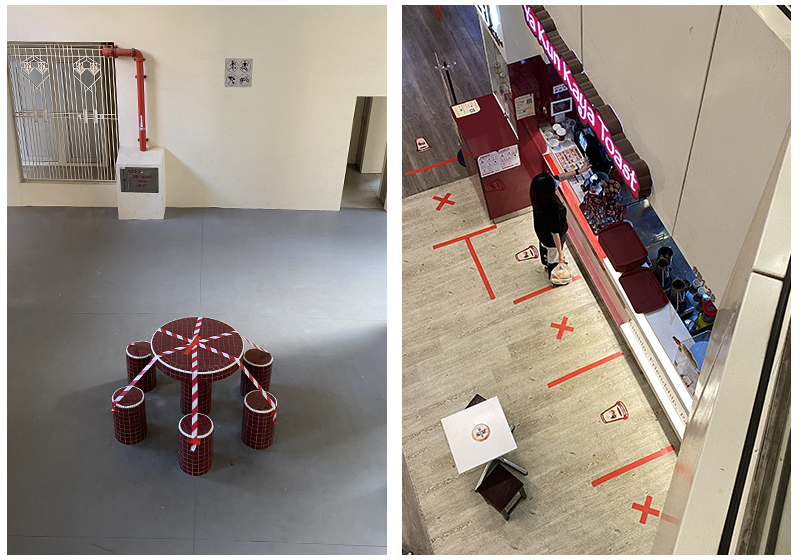
Safe-distancing configurations ranged from basic to elaborate, and some even resembled artworks. Over time, these bore the signs of wear and tear, and depending on the severity of the restrictions, the markings were maintained, adjusted, removed and applied anew. Tan’s contributions helped to capture the ephemeral nature of safe-distancing markers – once a ubiquitous feature of life during the pandemic.

The collection includes photographs from InstaSG, a community of Singapore Instagram photographers. InstaSG, which runs regular photo competitions where entries are submitted via hashtags, organised an open call in March 2021 for photographs documenting life in Singapore during the pandemic. Their established panel of judges, which includes professional photographers, shortlisted about 100 best entries and these were contributed to NL.

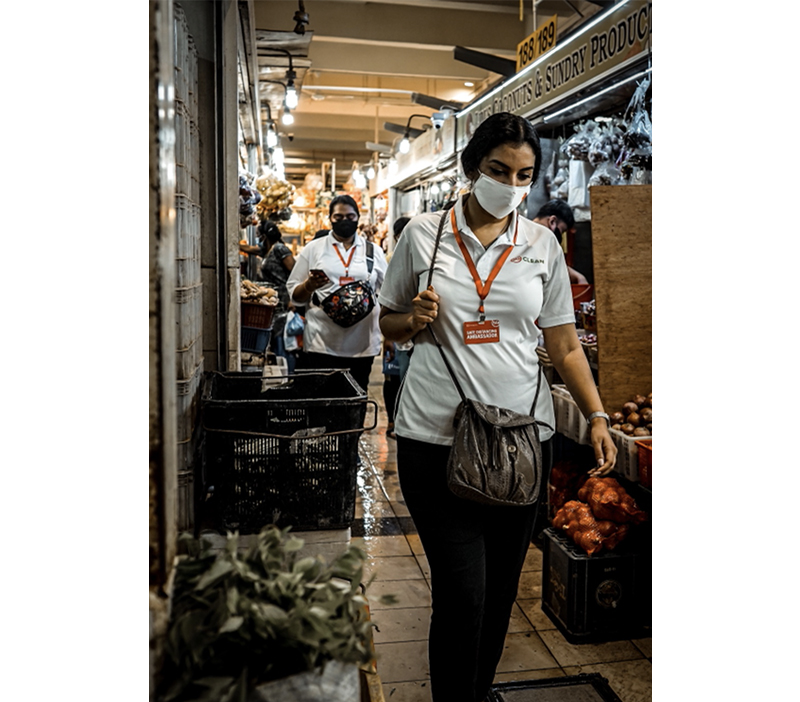
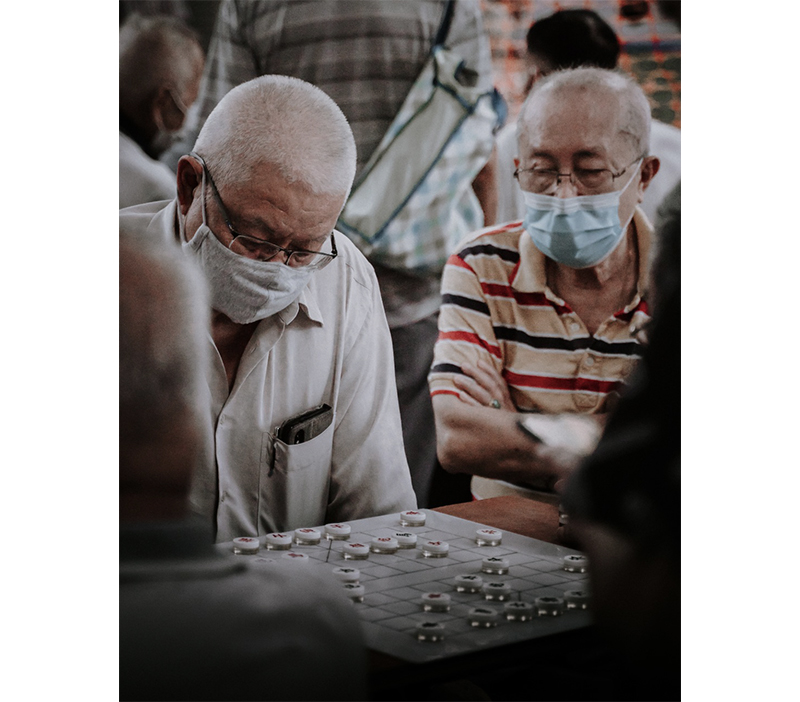
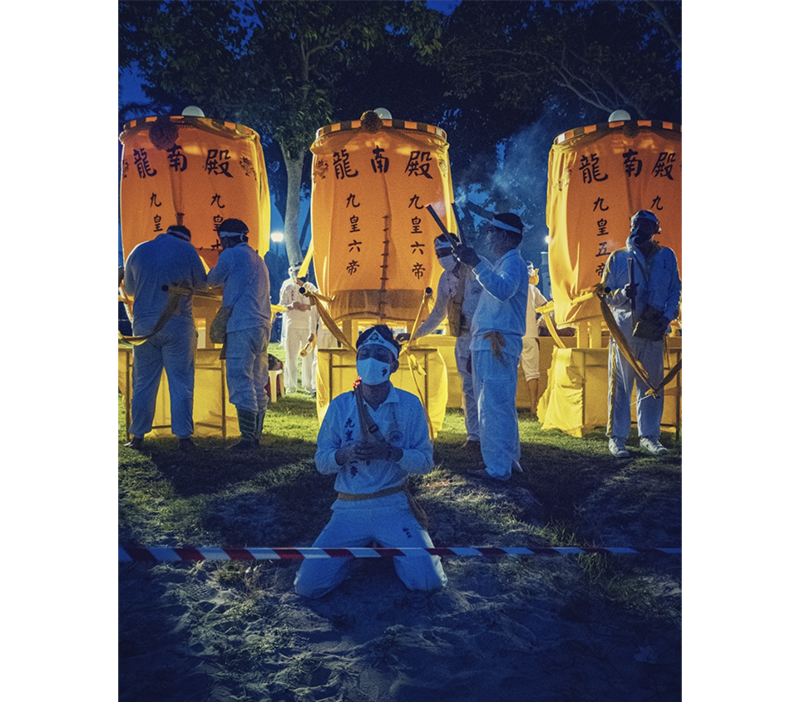
“Singapore Makan” and “Young Singapore”
With the success of “Documenting Covid-19 in Singapore”, NL recently launched a new collecting project focusing on local food and youth culture, titled “Singapore Makan” and “Young Singapore” respectively, in 2023.
This two-year project aims to collect photographs, videos, social media accounts, websites, publications, posters, manuscripts and more to capture the changing food and youth culture landscape in present-day Singapore for future generations.
Phase one of the project in January 2023 targeted personalities and organisations in the food and culinary industry, such as wet market stall holders, heritage food bloggers, private fine-dining chefs and home-based cooks, as well as youths who are active in the heritage, arts and sustainability sectors. These personalities and organisations were identified for their unique services/products or the significant contributions they have made to the respective sector.
In the second phase, a call to collect materials from the general public relating to the local food and youth culture was issued in October 2023. People could send in their contributions via the new crowdsourcing portal, “Singapore Memories: Documenting Our Stories Together”.
Highlights from “Singapore Makan”
Social media has greatly changed and shaped the food and dining scene in Singapore.1 Set up in 2021, the HappyCat.黑皮猫 YouTube channel creates behind-the-scenes videos documenting popular hawkers and their food.2
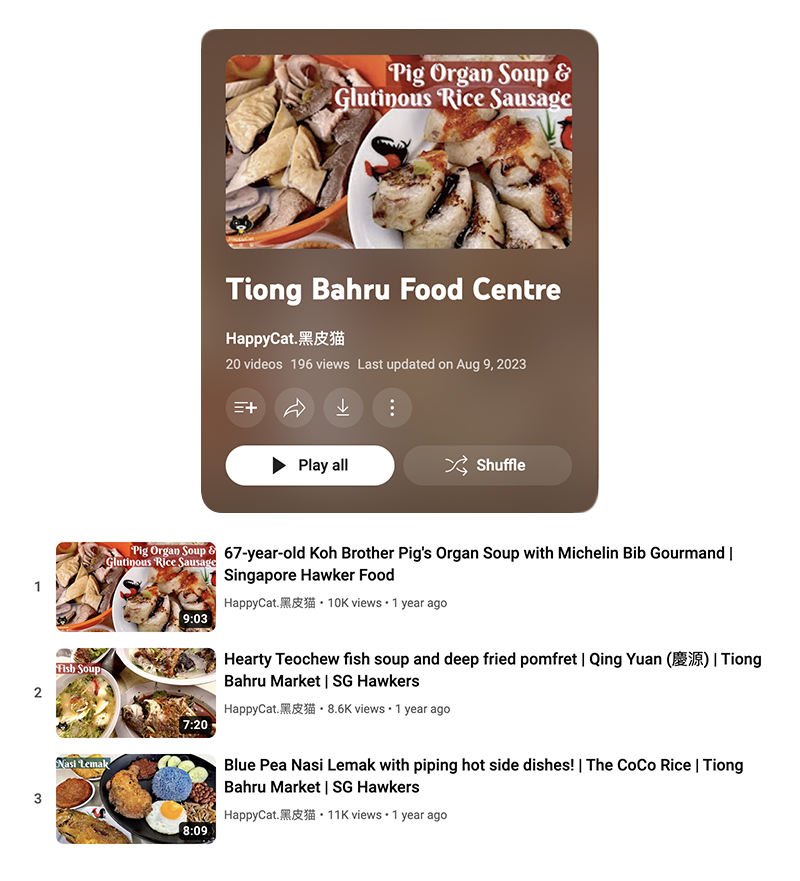
The channel contributed 25 of their most popular videos to the initiative. These include a Michelin Bib Gourmand 2019 awardee, Koh Brother Pig’s Organ Soup (Teochew-style clear soup boiled from pig bones, offal and preserved mustard vegetables), established in 1955, and another Michelin-recommended stall, the Tiong Bahru Lien Fa Shui Jin Pau (dumplings with jade-like skin resembling crystal and come in three types of savoury fillings – red bean, yam and turnip), established in 1961. These videos fill gaps in the documentation of our food heritage, focusing on famous stalls and well-loved dishes that we are familiar with today before they may be gone for good.
Tekka Online Market (now closed) was an e-commerce platform for shoppers to order their products online from one of Singapore’s oldest wet markets.3 It was created by the Infocomm Media Development Authority and creative agency BLKJ so that “shop owners and customers can find new – and safer – ways of doing things during the circuit breaker period”.4

As lockdown measures limited the number of people and the number of times people were allowed to visit wet markets, businesses in these markets were affected. The website and a promotional video were collected, capturing how groceries were purchased and sold online during the Covid-19 pandemic.
Highlights from “Young Singapore”
The study of contemporary youth culture is an emerging and ever-evolving topic. It is transient and ephemeral with every generation having its own culture. Sam See and Kevin Martens Wong are part of a new generation of youths who are actively leveraging social media to promote their causes and their work.
Sam See is an internationally known stand-up comedian who has participated in multiple international comedy festivals, including the Edinburgh Festival Fringe in 2022. His show, Government Approved Sex, was listed by Fest Magazine as one of “The Best of the Edinburgh Festivals”.5 He has been featured on Comedy Central Asia’s Stand-up Asia and Singapore’s comedy panel show Ok Chope!.6 His Instagram account, website, posters, manuscripts and performing materials were contributed to “Young Singapore”.

Kevin Martens Wong founded Kodrah Kristang (Awaken, Kristang) in 2016 to revitalise the endangered Kristang language – which is spoken by people of mixed Portuguese and Malay ancestry – through language classes, the Kristang Language Festival, an English-Kristang board game and an online dictionary.7 Wong was the 2017 recipient of both the President’s Volunteer and Philanthropy Award (Individual, Youth) and the Lee Hsien Loong Award for Outstanding All-Round Achievement.8 His websites (Kodrah Kristang and Merlionsman) and Facebook account were contributed to “Young Singapore” , and are representative of heritage initiatives that have gone online to do their part in preserving Singapore’s history.
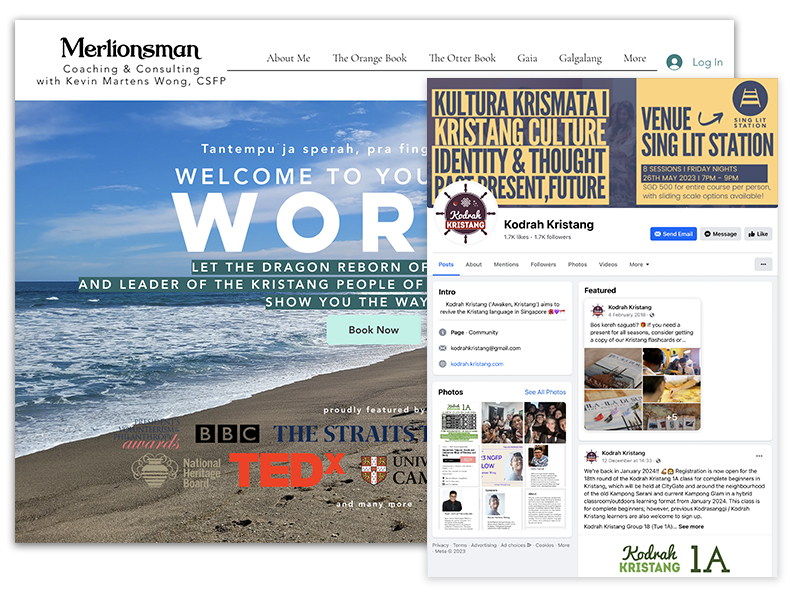
Contributing to Contemporary Collecting
The National Library welcomes everyone to be a part of the Contemporary Collecting initiative to preserve a slice of contemporary Singapore.
If you want to contribute something regarding youth culture or food, you may submit documentary materials that you own or created through the portal, “Singapore Memories: Documenting Our Stories Together” (http://www.singaporememories.gov.sg/). You may also nominate websites and content by contacting us at contemporary_collecting@nlb.gov.sg. Selected materials will be added into our national collection for preservation and research purposes.
Find photographs contributed by the public on National Library Online.
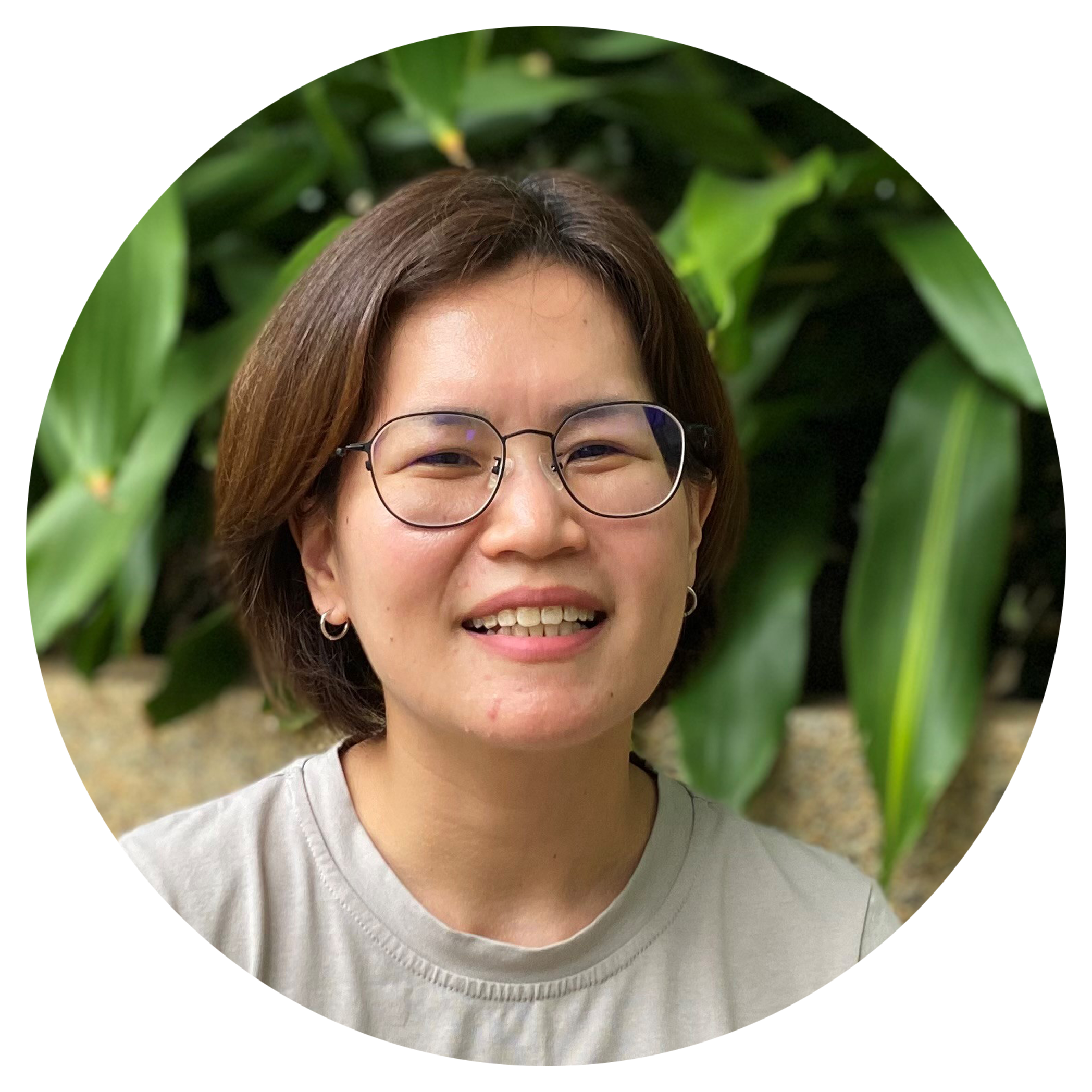 Janice Loo is a Librarian with the National Library, Singapore. She is part of the team that looks after the Singapore and Southeast Asia Collection, and Rare Materials Collection. Her work includes collection development, content creation, as well as research and reference assistance on topics relating to Singapore and the region.
Janice Loo is a Librarian with the National Library, Singapore. She is part of the team that looks after the Singapore and Southeast Asia Collection, and Rare Materials Collection. Her work includes collection development, content creation, as well as research and reference assistance on topics relating to Singapore and the region. Lee Meiyu is a Senior Manager with the National Library Board. She manages the statutory functions of the National Library Singapore, including its Legal Deposit Collection.
Lee Meiyu is a Senior Manager with the National Library Board. She manages the statutory functions of the National Library Singapore, including its Legal Deposit Collection.NOTES
-
“Over Half of Singaporeans Rely on Social Media to Discover New Restaurants: Study,” SevenRooms, 18 June 2023, https://sevenrooms.com/en/press/over-half-of-singaporeans-rely-on-social-media-to-discover-new-restaurants/. ↩
-
HappyCat.黑皮猫, “About”, YouTube, last accessed 16 December 2023, https://www.youtube.com/@HappyCat./about. ↩
-
“Tekka Online Market,” BLKJ, 1 November 2023, https://www.blkjhavas.agency/tekkaonlinemarket. ↩
-
Audrey Tan, “Coronavirus: Wet Market Stalls Go Online to Accommodate Shoppers During Circuit Breaker,” Straits Times, 3 May 2020, https://www.straitstimes.com/singapore/health/coronavirus-wet-market-stalls-go-online-to-accommodate-shoppers-during-circuit. ↩
-
“The Best of the 2022 Edinburgh Festivals,” Fest Magazine, 26 August 2022, https://www.festmag.com/edinburgh/features/the-best-of-the-2022-edinburgh-festivals. ↩
-
“About,” Mr Sam See, last accessed 16 December 2023, https://www.mrsamsee.com/. ↩
-
Hashirin Nurin Hashimi, “5 Minutes With… Kevin Martens Wong, Founder of Kodrah Kristang,” Tatler, 26 August 2019, https://www.tatlerasia.com/the-scene/people-parties/5-minutes-with-kevin-martens-wong-director-of-kodra-kristang. ↩
-
Cheow Sue-Ann, “8 Individuals and Organisations Win President’s Volunteerism and Philanthropy Awards,” Straits Times, 29 November 2017, https://www.straitstimes.com/singapore/8-individuals-and-organisations-win-presidents-volunteerism-and-philanthropy-awards; Ministry of Education, “Lee Hsien Loong Award for Outstanding All-Round Achievement,” 2017, https://www.moe.gov.sg/-/media/files/news/press/2017/annex-b—special-awards-2017.pdf. ↩

